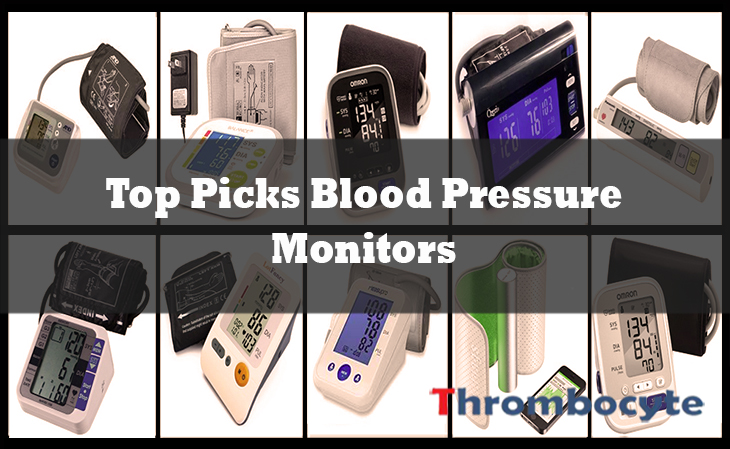What is Internal Bleeding?
Due to the nature of occurrence in which, happening inside the body and usually in lesser amounts, it may take quite some time before the bleeding will be noticed.
When the bleeding is rapid or intense, swelling may occur. As a result, it causes a discoloration under the skin. If the bleeding occurs simultaneously in different areas of the body, it may cause shock or loss of consciousness. Read facts about hemostasis.
Signs of internal bleeding may vary significantly depending on the location of the bleeding site. Gradual internal bleeding may be a risk factor for anemia, which may result in tiredness, energy loss, shortness of breath, and skin paleness.
Bleeding in the gastrointestinal track may cause the presence of blood in the stool. Similarly, bleeding in the urinary tract may lead to a bloody urine.
Risk for Internal Bleeding
What causes internal bleeding? There are several factors that can be considered in relation to internal bleeding causes. Some of the risk factors for internal bleeding include: use of anti-clotting medications, hemophilia (a rare hereditary blood condition), and trauma.
In addition to certain medical disorders that have been found to be common causes of internal bleeding, there are also some medications linked to internal bleeding which includes long term use of non-steroidal anti-inflammatory drugs (NSAIDs) like indomethacin (Indocin), naproxen (Naprosyn, Aleve), and ibuprofen (Advil, Motrin).
Although minor internal bleeding has been identified to heal by itself, it may still bear certain grievous consequences. If the bleeding involves a significant loss of blood, blood transfusion might be necessary.
When it comes to internal bleeding treatment, doctors may recommend either one or all of the following methods depending on the intensity of the condition: (a) identification of bleeding sites, (b) stabilization of vital organs like those involved in the respiratory system, circulatory system, and (c) the management and repair of damages that may have resulted from the bleeding.
Signs and Symptoms of Internal Bleeding
How do you know if you have internal bleeding? What does internal bleeding feel like? Below are various signs that can be indicative of internal bleeding.
1. Pain in the Abdomen
Pain in the abdomen can be one of the signs that may indicate that a person developed internal bleeding. Abdominal pain is the presence of any tenderness felt anywhere between the chest and the groin.
However, presence of pain in the abdomen does not necessarily mean that internal bleeding is present. Because abdominal pain can also be a result of stomach cramps (like in viral gastroenteritis), among other factors.
In case of any unusual abdominal discomfort, it is recommended that you seek immediate medical attention. Read about stomach ulcer symptoms.
2. Blood in the stool
Blood in the stool is another of several internal bleeding signs commonly assessed. Blood in stool can happen due to several interesting factors primarily related to impairment in the digestive system. See 10 most common causes of blood in stool.
A bloody stool can be a result of bleeding that is located anywhere in the esophagus to the anus. Bleeding in the lower digestive tract is likely to cause bright red blood in the stool. Although consider that beets and tomatoes can also make the stool appear reddish.
A simple stool test by a doctor may be required to ascertain if there is blood in the stool or not. Sometimes the presence of blood in the stool makes it appear tarry (black) due to an upper GI bleeding location like in the stomach, esophagus, or the first portion of the small intestine.
When talking about dark blood in the stool, the doctor may refer to the indication as “Melena” during your discussions. Read Blood Clots in Stool.
3. Vomiting blood
Regurgitating food from the stomach accompanied with blood stains is another indication that can be classified under internal bleeding symptoms. The vomitus contains blood which is usually either crimson red or dark red in color. It is usually a mixture of food and blood but may sometimes purely appear as blood.
Blood in the vomit may come from the upper gastrointestinal tract (throat, esophagus, and mouth). Any occasional but prolonged vomiting episodes or forceful vomit can cause tear in small blood vessels which eventually result to the presence of blood in the vomit.
4. Coughing blood
Coughing blood encompasses spitting mucus stained with blood. This may originate from the lungs or throat (the respiratory system). The condition is medically termed as Hemoptysis.
Every so often the mucus appears to be stained with only a few streaks of blood.
The sign is considered indicative of internal bleeding. Usually, the blood is bright red in color and rusty in features.
In many instances, the blood-streaked excretion that accompanies the cough looks bubbly (contains bubbles). This happens when it consists a mixture of mucus and air from the lungs.
5. Bloody Urine
Blood in the urine is another sign of internal hemorrhage. In some cases, the amount of blood in the urine may appear in small amounts where visibility is only possible under a microscope.
If in case the underlying bleeding is present in substantial amount and visible to bare eyes, it will be enough for the urine to turn the toilet water into red or pink in color during urination.
Hematuria is the medical term used to refer to a condition where blood is present in the urine. There are several causes of hematuria important to be aware of which are most likely linked to problems in the kidneys or sections of the urinary tract commonly due to injury of the bladder or the kidney itself. Others include cancer of the bladder or kidney, and kidney failure. Read Blood Clots in Urine.
6. Vaginal bleeding
Heavy and prolonged irregular menstrual periods can be a sign of internal bleeding. Often, normal periods last for 4 days (with an addition or minus 2-3 days), and normally occur after every other 28 days. See causes of irregular menstrual periods.
Vaginal bleeding after menopause has also been identified to be occurring in some individuals and it may be linked to a number of factors; but most of which are curable. Read about spotting between periods.
Abnormal vaginal bleeding has also been associated with cancerous conditions. Women who experience post menstrual bleeding have been considered to a likelihood of 10% more probability of cancer development.
7. Compartment Syndrome
In some cases, bleeding may occur within the muscles after an injury that eventually results in a swell. The swelling normally causes an increased pressure within the muscle, to an extent to what is called as compartment syndrome.
It is often a result of fracture or muscle injury. Patients with Compartment Syndrome usually display a decreased blood supply and therefore, experience considerable nerve damages.
Compartment Syndrome leads to numbness and difficulty in motion. A long-term condition of Compartment Syndrome may develop signs like muscle cramps, kidney failure, and nerve damage.
8. Shock
Shock is one of the symptoms associated with intense internal bleeding. Shock is usually a result of a decrease in blood volume in the circulatory system.
Signs of shock may include increased heartbeat, sweaty skin (cool sweaty skin), low blood pressure, and deteriorating mental functions. The symptoms become more severe when there is continued blood loss.
9. Painful joints
Problems concerning the function of joints (bony and compact) can result to immediate and significant pains due to the pressure it exerts against blood vessels. This is also a primary reason why it considerably causes an internal bleeding.
Some patients with hemophilia find the pain to be chronic, unbearable, and unmanageable in nature. This kind of bleeding is usually common in patients who are under anticoagulation medicines.
10. Bleeding in the head
The presence of any bleeding in the head displays in its own distinctive signs of internal bleeding. Basically, it is characterized by general body weakness, confusion, headache, slurred speech, changing mental status, and vision problems.
Source:
MSD Manual (Internal Bleeding), BetterHealth (Bleeding), American Society of Hematology (Bleeding Disorders)
Journal Reference:
- Perez-Miranda M, Gomez-Cedenilla A, León-Colombo T, Pajares J, Mate-Jimenez J. Effect of fiber supplements on internal bleeding hemorrhoids. Hepato-gastroenterology, 01 Nov 1996; https://europepmc.org/abstract/med/8975955
- Keiichiro Ito, Shigeki Sugano, Hiroyasu Iwata. Internal bleeding detection algorithm based on determination of organ boundary by low-brightness set analysis. International Conference on Intelligent Robots and Systems, 12 Oct. 2012; https://ieeexplore.ieee.org/abstract/document/6385745/
- Andrew D. Fisher MPAS PA-C, Eileen M. Bulger MD2, Mark L. Gestring MD3. Stop the Bleeding: Educating the Public. JAMA., 2018; https://jamanetwork.com/journals/jama/article-abstract/2696991
- Erin Lavik. Engineering Hemostatic Nanoparticles to Stop Internal Bleeding. Imperial A., 2016 Nov; https://aiche.confex.com/aiche/2016/webprogram/Paper454746.html
- Michael T. McEvoy, Aryeh Shander. Anemia, Bleeding, and Blood Transfusion in the Intensive Care Unit: Causes, Risks, Costs, and New Strategies. Am J Crit Care., 2013 Nov; http://ajcc.aacnjournals.org/content/22/6/eS1.abstract
- READ MORE





We should be aware of this 10 dangerous signs that you’re having internal bleeding.
thanks for sharing this post. Glad I came across this valuable article.
Thanks for pointing out that abnormal vaginal bleeding can be related to cancer. I guess it would indeed be best for my friend to start looking for treatment of abnormal bleeding because she’s been experiencing it for two weeks now. She said it definitely feels different from her menstrual cycle so it’s quite alarming.
It’s quite worrying to know that vomiting blood could be a sign of internal bleeding in the gastrointestinal tract. My friend just told me that he had been experiencing that problem for quite a while now and is unsure of the cause. If it is what you say it is, I’ll have to tell him to seek a doctor for gastrointestinal disorder treatments as this seems like a very serious issue. I wouldn’t want anything bad to happen to him or for his condition to worsen so I hope he gets treated soon.